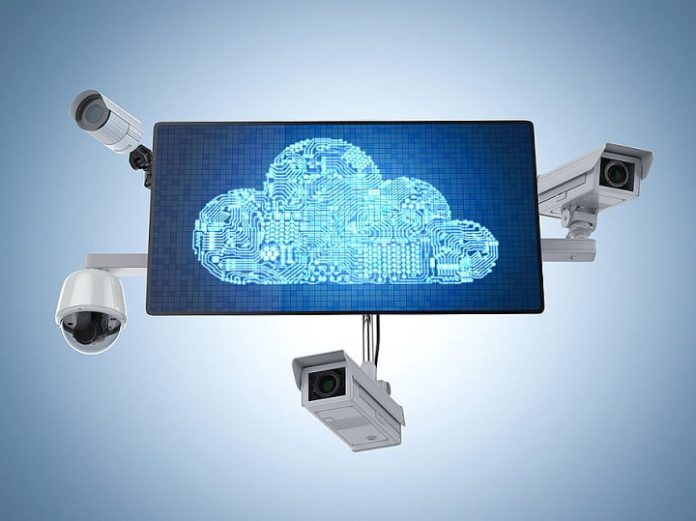Best Cloud CCTV Option
♦ What is the best cloud CCTV option? It depends on the site application, its network support services and your choice of supplier, according to OpenEye’s Angelo Salvatore.
Before we kick off, it’s worth pointing out that cloud is on-demand computer services delivered over the internet and paid for as you go along. Users need local workstations of sufficient capability and big data pipes – that’s because network contention means you rarely get peak services when you need them.
Cloud offers many advantages – there’s a big reduction in capital expenses and running costs when it comes to IT services. In the past most companies had significant investment in server rooms onsite. As we power through digital transition, the need for costly local infrastructure is reduced. At the same time, user mentality has changed, with cloud services a preferred model for some users.
It’s worth noting that cloud CCTV services are not new – they’ve been around for a good while now. All of us who consume video content via Netflix, BritBox, YouTube and all the rest know that these services are highly reliable in the presence of stable and well managed networks.
According to OpenEye’s Angelo Salvatore, when selecting the best cloud CCTV option, there are 4 primary models, including:
1. Direct to cloud
2. Direct to cloud recording with a buffer device
3. Edge recording with cloud management
4. Cloud-managed server appliances (OpenEye’s model).
Direct-to-Cloud Model
“Many direct-to-cloud recording solutions are designed around limited camera counts and smaller site designs where simplicity and storage hardware is often exchanged for higher ongoing costs and proprietary technology,” Salvatore explains.
“Bandwidth is the biggest bottleneck as all video is stored to the cloud. Given that up to 90 per cent of video is never reviewed, it seems counter intuitive to pay for bandwidth and storage in the cloud. They may also offer analytics, etc., but that does not change the ability to seamlessly manage hundreds of users/sites.”
Pros
* No recorder onsite
* Real-time offsite video
* Video redundancy in cloud
Cons
* Bandwidth utilisation
* Camera count and resolution limitations
* Reliance on network connectivity
* Often proprietary or locked hardware (cameras required)
Best Fit
* Less than 4 cameras for residential or small retail applications
Cost
* Lowest upfront cost
* Higher recurring cost
* Hardware cost
* Additional costs for storage, etc.
Direct-to-cloud Recording With Buffer Device Model
“Like solution 1, this option includes an intermediary device to manage the streaming back to the cloud,” Salvatore explains.
Pros
* Video redundancy in cloud
* Buffer minimizes impact on network, can help buffer video when it exceeds bandwidth to upload in real time.
Cons
* Resolution and camera count limitations
* LAN performance
* Storage cost
* Proprietary streaming hardware.
Best Fit
* 1–4 cameras, limited sites
Cost
* Lower upfront cost
* Higher recurring cost
* Additional costs for storage, etc.
Edge Recording With Cloud Management Model
“Option 3 provides recording on an edge device with the ability to manage the device in the cloud,” says Salvatore.
Pros
* No recorder onsite
* Storage expands with camera count
* Minimal impact on network
Cons
* Limited camera options (often can’t use existing cameras if you have them)
* Reliability of solid-state media
* Cloud backup storage cost
* Often proprietary hardware or lock-in agreements.
Best Fit
* Small to larger camera count with small camera counts per site (1-4)
Cost
* High upfront cost if you’re looking at MSRP
* Lower recurring cost.
Cloud-Managed Server/Appliance Model
“This is the model that OpenEye has adopted via its OpenEye Web Services (OWS) open-cloud platform,” Salvatore says.
Pros
* Higher camera count and resolutions per site
* Lower storage cost
* LAN performance for camera and client connections
* Ease of deployment, maintenance and management
* Can retrofit existing camera NVR/VMS installs and save money
* Easy to manage hundred/thousands of sites
* Non-proprietary.
Cons
* Initial onsite hardware cost
* No edge storage.
Best Fit
* More than 4 cameras (best fit for high camera counts)
* 4-50 channels/site/unlimited sites
* No limit to cameras
* Great for upgrading existing installs or where existing cameras are present.
Cost
* Higher upfront cost for hardware
* Lower recurring cost.
Which is the best cloud CCTV option? That depends on application, network bandwidth, camera numbers, image quality, the need for live remote oversight and other factors. Importantly, integrators and end users need to factor in short term growth expectations when selecting the best cloud CCTV model.
Another important consideration is that switching cloud options is much faster than altering local-centric CCTV system, which will have costs defrayed over a lifespan of 8-10 years. This does not mean the process of redirecting hundreds of cloud cameras to new servers is easy, however, so ensure your choice has plenty of room for growth in size and functionality. Something else to note is that some specialised direct to cloud models can support thousands of cameras with no field appliances but a switch.
#sen.news #SEN #SENnews #security #electronics









